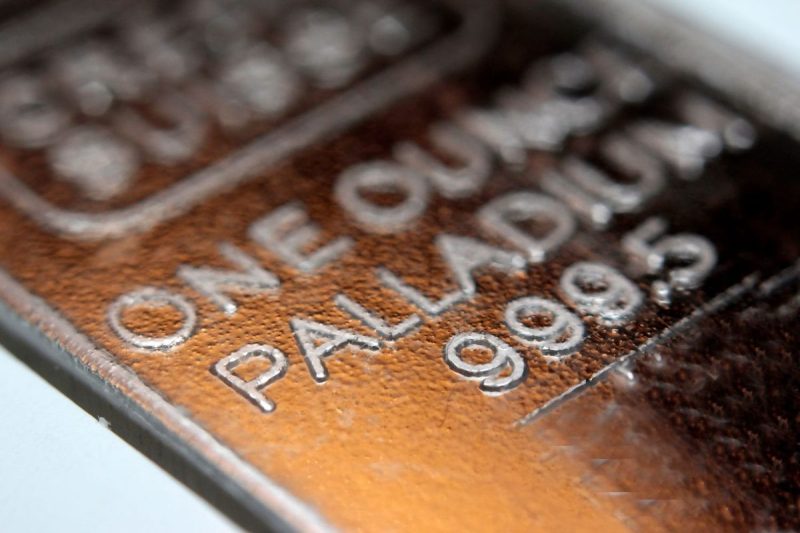Palladium and platinum prices soared in recent trading sessions, reflecting the direct effects of heightened geopolitical tensions between Western powers and Russia.
On October 24, palladium prices surged by nearly 10 percent in a single day, reaching approximately US$1,168 per troy ounce. They surged even higher the following day, touching US$1,200 for the first time since since December 2023.
Platinum also experienced an uptick, although a less pronounced one. The metal’s price rose to about US$1,044, marking a five month high, although it pulled back after.
Over the past two months, the sister metals have seen considerable volatility. In late August, palladium reached a seven-year low of US$835. Its price following this recent surge represents an over 40 percent recovery from that low. Platinum has also followed a positive trajectory, recovering from levels of around US$900 during the same period.
Potential for G7 trade sanctions on Russian palladium drive price volatility
The rise in palladium prices can be attributed to the US Treasury’s call for stricter sanctions on Russian precious metals, which include both palladium and platinum.
The US recently proposed to its Group of Seven (G7) partners that they consider sanctioning Russian exports of key metals, including palladium and titanium.
A similar situation in December last year — when the UK banned certain Russian metal imports — saw an even larger price reaction, with palladium jumping around US$300, or 30 percent, within just five days.
It is worth noting that Russia is a major global supplier for the metals, accounting for approximately 40 percent of palladium and a significant portion of platinum production.
As the war in Ukraine continues, the US and its allies are concerned about the implications of Russian exports on global supply chains.
If G7 sanctions on Russian palladium exports were to materialize, the impact on the US market would be substantial.
Currently, the US is already facing a shortage of physical palladium, with domestic production unable to meet the demand, especially as Sibanye-Stillwater(NYSE:SBSW), one of the largest US sources of palladium, is planning to halve its platinum and palladium production at its mine in Montana next year.
Recycling palladium has not yet filled this gap, and much of the existing supply from South Africa has been accounted for, leaving few alternative sources for US consumers.
While G7 nations would face enforcement challenges due to the potential fallout across automotive, electronics and other palladium-dependent sectors, the possibility alone is reshaping market expectations
Russia proposes BRICS precious metals exchange at Summit
Russia may have some plans of its own. On Thursday (October 24), Reuters reported that at this years annual BRICS Summit, which concluded that day, Russia suggested the BRICS countries establish a precious metals exchange aimed at ensuring fair pricing and expanding trade within the bloc, according to Russian Finance Minister Anton Siluanov.
This proposal aligns with broader BRICS discussions on building financial infrastructure alternatives to counterbalance Western-dominated platforms.
The envisioned BRICS exchange would cover key aspects of precious metals trading, including creating benchmark price indicators, establishing standards for bullion production and trade, and providing clearing and auditing instruments for market participants.
These mechanisms would offer an alternative to longstanding Western exchanges such as the London Metal Exchange (LME), and act as a safeguard against sanctions affecting BRICS members.
The BRICS initiative could help Russia and its allies bypass these barriers, promoting freer trade within the bloc and offering member countries like China and India an alternative source for precious metals outside of Western markets.
For the US and Europe, this initiative signals a possible reduction in BRICS’ reliance on Western financial systems, potentially reshaping trade patterns for metals critical to industries like automotive, technology and jewelry.
However, Russia’s proposal to establish a new trading mechanism for precious metals within the BRICS framework has raised eyebrows among market players.
Such actions could complicate existing trade routes and affect pricing mechanisms, as the world’s primary market for palladium and platinum has historically been centered in London. Collectively, the market response to these geopolitical developments has been marked by an increase in speculative trading activity.
To illustrate, recent trading volumes for palladium and platinum have surged. For instance, the dramatic rise in palladium prices is notable given its primary use in autocatalysts for gasoline engines — a sector facing scrutiny as governments globally target net-zero carbon emissions.
As the US and its allies push for tighter sanctions, and as Russia seeks to forge new trading partnerships within BRICS, the market for these precious metals can expect further volatility moving forward
Securities Disclosure: I, Giann Liguid, hold no direct investment interest in any company mentioned in this article.


